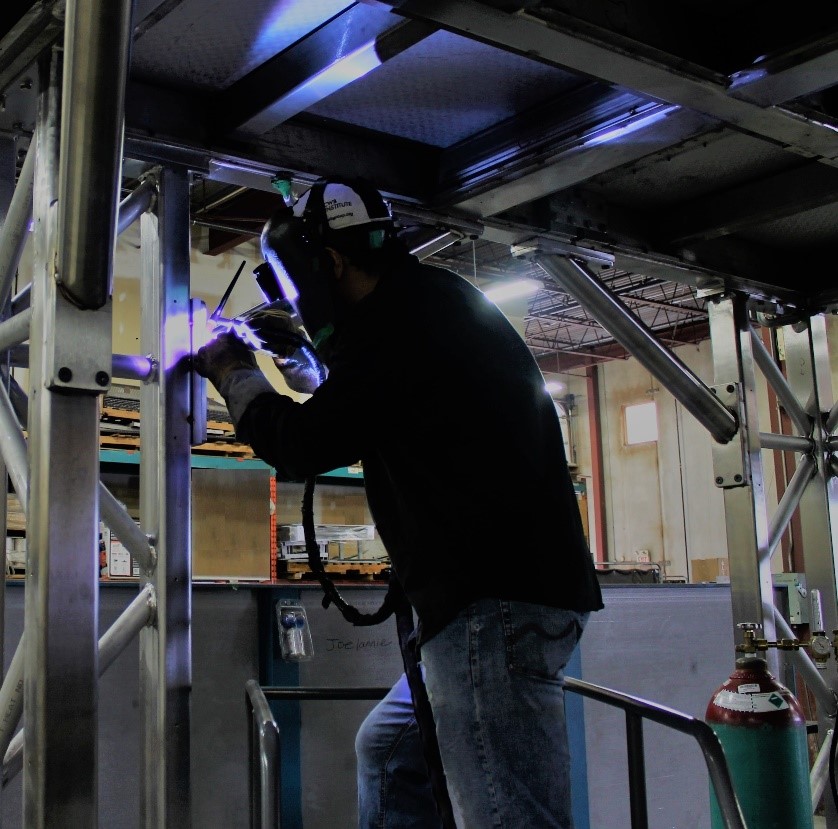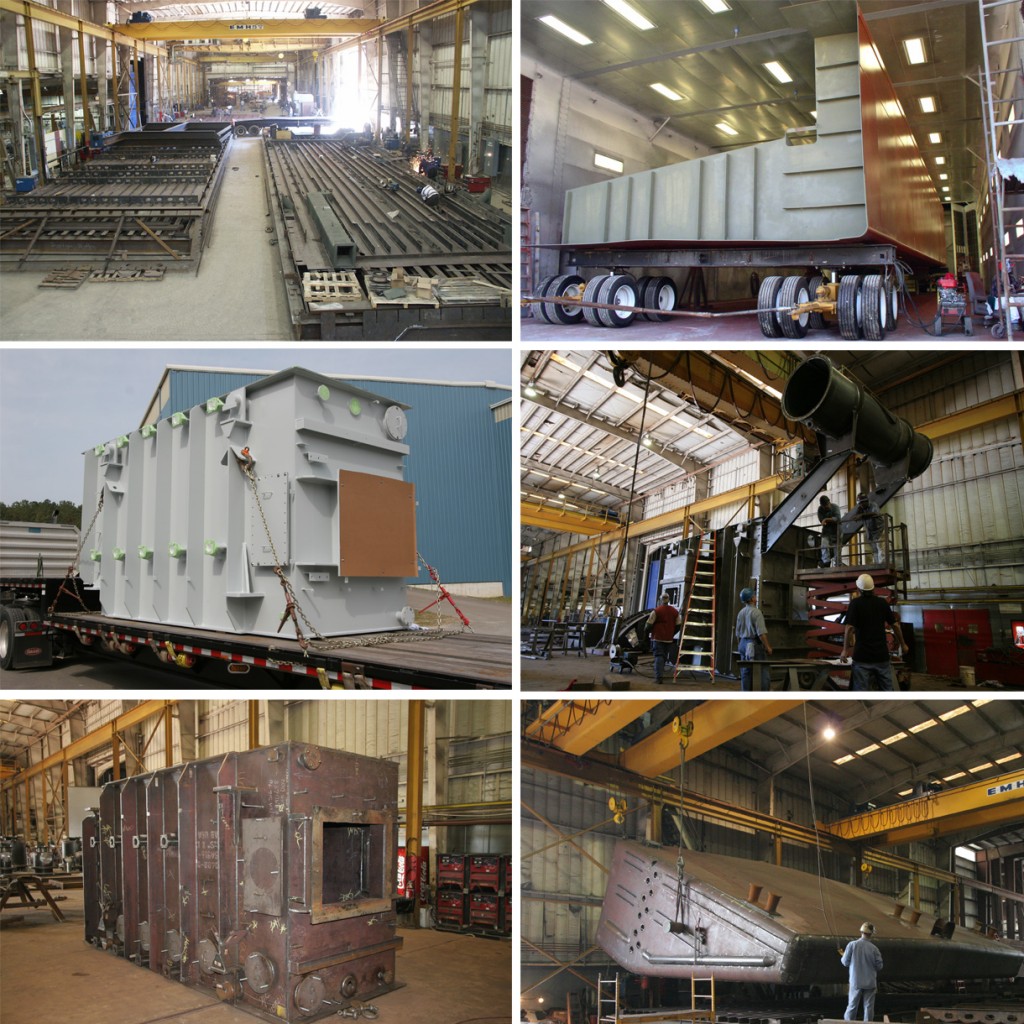Comprehensive Evaluation of Cutting-Edge Techniques in Steel Construction Industry
As the steel fabrication market continues to develop, the combination of innovative strategies has actually come to be important for staying affordable and satisfying the needs of modern-day production criteria. In this vibrant market where modern technology plays a pivotal role, understanding the nuances of these advanced methods is not just a choice yet a need for those looking to build in advance in the ever-evolving globe of steel construction.
Laser Cutting Improvements
In the realm of steel construction, laser reducing advancements have actually changed the accuracy and performance of steel shaping processes. By utilizing the power of concentrated laser beams, makers can currently accomplish exceptional levels of accuracy when puncturing different sorts of steels. This innovation enables elaborate layouts to be implemented with marginal material wastage, making it a cost-effective solution for sectors needing high precision components.
Among the crucial advantages of laser cutting is its capacity to deal with a wide variety of materials, consisting of stainless steel, aluminum, and carbon steel, easily. The process produces tidy, burr-free edges, removing the requirement for additional ending up steps. The non-contact nature of laser cutting minimizes the risk of product contamination, resulting in higher high quality end products.
Additionally, laser cutting makers can be programmed to make swift, specific cuts, considerably lowering production time contrasted to traditional reducing methods. This rate and accuracy make laser cutting specifically suitable for automation environments where effectiveness is extremely important. As innovation remains to advance, laser cutting is poised to play a significantly important function in the steel manufacture industry.

CNC Machining Innovations
The advancement of CNC machining technologies has ushered in a brand-new period of accuracy and efficiency in the steel construction market. Computer System Numerical Control (CNC) equipments have transformed steel construction by using unmatched accuracy and repeatability in the production process. steel fixing. One of the essential advancements in CNC machining is the combination of innovative software program systems that make it possible for real-time monitoring and adjustments, causing boosted performance and quality assurance
In addition, the growth of multi-axis CNC equipments has actually permitted the fabrication of complicated steel elements with elaborate designs that were previously testing to generate. These makers can do a large variety of machining operations, including milling, drilling, transforming, and grinding, all with high degrees of precision.
Moreover, the incorporation of automation and robotics in CNC machining has structured manufacturing processes, reduced preparations, and lessened the margin of error. This integration of cutting-edge modern technologies not only boosts performance yet likewise ensures regular high quality across all made steel parts. In conclusion, CNC machining technologies proceed to drive developments in the steel construction market, establishing brand-new requirements for precision and efficiency.
Automated Welding Technologies
Automated welding innovations have actually transformed the steel manufacture industry, boosting effectiveness and accuracy in the welding process. These cutting-edge innovations utilize computer-controlled systems to automate the welding process, leading to greater productivity levels and boosted weld high quality. Among the essential advantages of automated welding is the ability to do intricate welds with constant precision, decreasing the chance of errors and remodel.
Robot welding systems are at the leading edge of automated welding modern technologies, offering exceptional speed and accuracy. These systems can manage a wide variety of welding jobs, from easy to detailed, with ease (Alpha reo). By making use of sophisticated sensing units and software, robotic welders can adapt to variants in like it product and joint geometry, ensuring an uniform and reputable weld
In addition, automated welding technologies improve work environment safety and security by decreasing the exposure of human welders to dangerous fumes and extreme warm. As the steel manufacture sector proceeds to evolve, incorporating automated welding technologies will be important for business looking to stay competitive and meet the growing demands for top quality welded products.
Robotics Assimilation in Fabrication
Utilizing robot systems in manufacture procedures has actually come to be an essential method for improving performance and precision in modern-day production settings. Robotics combination in steel construction uses a myriad of benefits, including increased efficiency, enhanced high quality control, and enhanced precaution. These innovative robotic systems are geared up with sophisticated sensing units and shows abilities, enabling them to perform intricate jobs with a high degree of accuracy and repeatability.
Among the essential advantages of robotics assimilation in steel fabrication is the ability to automate recurring tasks, such as material handling, reducing, welding, and assembly procedures. This not just speeds up manufacturing cycles however likewise lowers the danger of human error, causing higher total product top quality. Furthermore, robots can run 24/7, considerably boosting manufacturing output and conference tight task due dates.

3D Printing in Steel Manufacturing
Having reinvented the steel manufacture industry through robotics combination, the expanding exploration of 3D printing in steel manufacturing is poised to additional development the world of modern-day manufacturing techniques. 3D printing, also referred to as additive production, uses extraordinary design freedom and complexity, enabling the development of elaborate steel frameworks that were previously unattainable through standard manufacturing techniques. By making use of computer-aided layout (CAD) software program, suppliers can precisely regulate the layer-by-layer deposition of steel product, leading to get rid of improved functionalities and geometries.
Among the key benefits of 3D printing in steel production is its capacity to lower material waste substantially. Unlike subtractive production processes where excess material is trimmed away, 3D printing just makes use of the essential quantity of steel required for the final component. This efficiency not just causes set you back savings but additionally straightens with lasting manufacturing practices by minimizing environmental influence.
In addition, 3D printing allows rapid prototyping and personalization, permitting the production of tiny sets of complex steel parts with short preparations. As the innovation continues to grow and come to be a lot more easily accessible, its integration right into mainstream steel construction processes is anticipated to drive advancement and effectiveness throughout the market.
Final Thought
In final thought, the steel manufacture sector has actually seen significant developments in methods such as laser cutting, CNC machining, automated welding, robotics combination, and 3D printing. These innovative modern technologies have actually changed the means steel items are made, bring about enhanced precision, cost-effectiveness, and effectiveness. Proceeded financial investment in these cutting-edge methods is critical for the sector to remain competitive and meet the demands of modern-day production processes.
As the steel fabrication sector proceeds to develop, the integration of advanced techniques has actually ended up being vital for staying affordable and meeting the needs of modern-day manufacturing standards.One of the vital benefits of laser cutting is its capability to handle a have a peek at this site vast variety of materials, consisting of stainless steel, light weight aluminum, and carbon steel, with convenience.Automated welding innovations have changed the steel construction industry, boosting effectiveness and accuracy in the welding process.Having reinvented the steel construction industry with robotics assimilation, the blossoming exploration of 3D printing in steel production is poised to more advancement the world of contemporary production strategies.In final thought, the steel manufacture market has actually seen significant innovations in methods such as laser cutting, CNC machining, automated welding, robotics assimilation, and 3D printing.
Comments on “Finest Steel Fabricators Melbourne: Transforming Ideas into Reality”